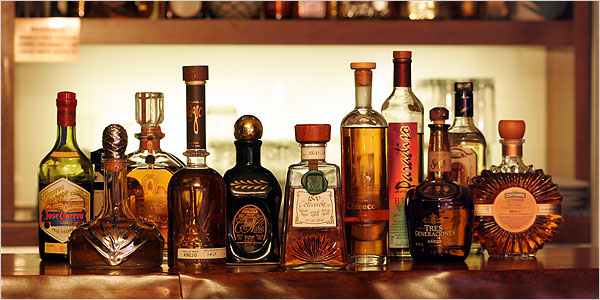Tequila - it's one of the most divisive spirits in the market, and for good reason. You'd be forgiven if the mere mention of tequila brings up an automatic gag reflex from too many nights of bad shots and inevitable hangovers. But what you may not realize is that true tequila doesn't have to be a regret, and can in fact be a spirit that rivals the best of them when it comes to enjoyment.
Understanding 'tequila'
Fun fact: like true champagne can only come from the Champagne region of France, true tequila can only come from the state of Jalisco in Mexico. Mexican laws states the official tequila regions as the states of Guanajuato, Michoacán, Nayarit and Tamaulipas.
Tequila itself is a distilled beverage made from the blue agave plant which grows between 5 to 7 years before harvest. Agave grows primarily in the area surrounding the city of Tequila (yes, there is actually a city named Tequila!), 40 miles northwest of Guadalajara, and in the Los Altos highlands of the western state of Jalisco. The soil, climate, harvest period and distilling process all impact the final outcome of the flavor profile.
So, if the definition of tequila is so controlled, why is there such a wide gap between gut-wrenching and quality? Here's the trick: cheap tequila contains 51 per cent of agave, the minimum required by Mexican law; the rest is supplemented with cheap sugar-cane based liquor and added caramel for color and flavor. That bad hangover is the result of the additives, not the agave.
What to look for
There are a few simple rules to live by when looking for a good tequila brand:
Rule #1: Always source a tequila that is 100 per cent blue agave.
I cannot stress enough the 'night and day' difference a pure blue agave tequila will be from the cheaper stuff.
Rule #2: Don't confuse color with quality.
Like I mentioned earlier, coloring additives can make bad tequila look aged, so don't judge a book by its cover.
Rule #3: Know which tequila style works for you
There are four standard varieties:
• Blanco is the "purest" form, coming straight from the stills. This coats the tongue with some fruity flavor and can have that tequila "bite." This is the perfect option for cocktails and mixed drinks.
• Reposado is tequila aged for between two months to a year in oak barrels. This not only gives it a slight gold hue, but cuts down the bite and drinks much smoother.
• Añejo is where you start hitting the top-shelf sipping tequila which are aged for a minimum of one year in oak barrels. This is also where different brands have a chance to put their own spin on the spirit. For example, Espolon Añejo is aged for 10 month in American oak barrels and then transferred into Wild Turkey Bourbon barrels for the remaining two.
• Extra Añejo is the rarest of the rare. Aged for a minimum of three years, these tequilas vary wildly based on the barrels used. These are the prized possessions of tequila drinkers, and should never be put in a mix drink.
Rule #4: Price doesn't dictate quality.
An average bottle of lower-end tequila could run you around $29 and an average bottle of higher-end tequila can be around $36. Not a significant price difference, but there's a significant quality difference. Focus on the above rules rather than pricing.
Rule #5: Never, ever, buy tequila with a worm.
Once you've found that good bottle of tequila, what should you do with it? Read the full article at huffingtonpost.ca for a few ideas.


